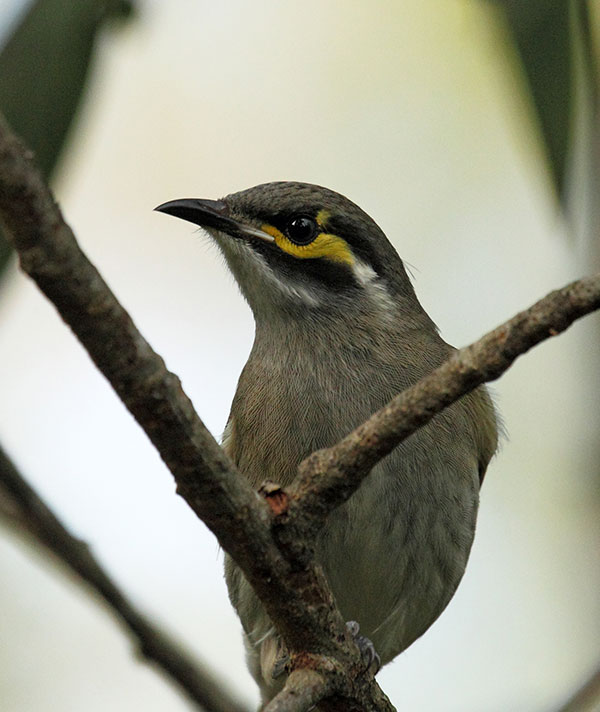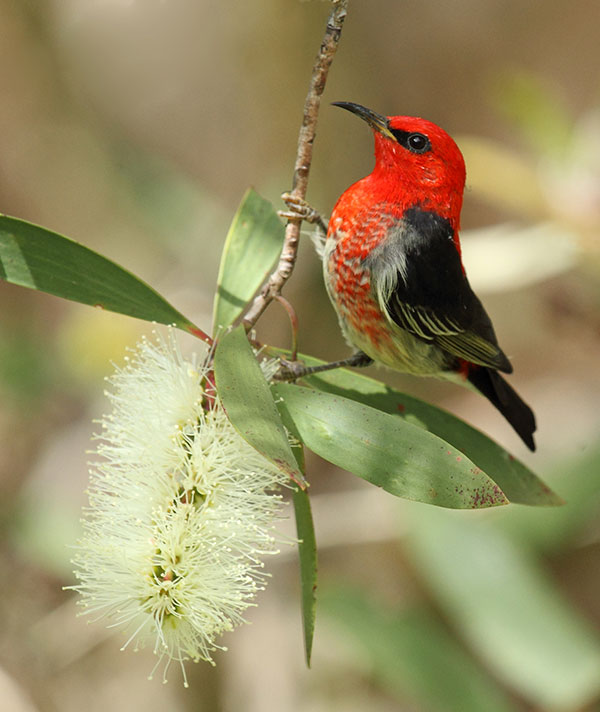During April and May, a massive honeyeater migration was seen across South East Queensland. Due to the diminutive size of these birds, their migration could have easily gone unnoticed. However, if you tuned your ear in to their calls or looked skywards, it was truly a remarkable spectacle.
We are not exactly sure how many birds migrated this autumn, but counters near Sydney recorded nearly 50,000 individuals. One afternoon, on my friend’s back deck at Mt Glorious, we counted 500 individuals in 20 minutes. That rate continued throughout the day.
While there is still much to learn about these fascinating wildlife movements, we do know that the main species involved is the Yellow-faced Honeyeater. While sedentary and feeding, they make a “chuck- up, chuck-up” call; one of the easier calls to remember. When flying, they make a single note contact call. Other migrants that made the journey from south to north include Scarlet Honeyeaters, White-naped Honeyeaters, Silvereyes, and Striated and Spotted Pardalotes.


Two of the autumn migrants, a Yellow- faced Honeyeater (left) and a Scarlet Honeyeater (right is a stunning male)
We do know that some individuals travel a long way. Silvereyes migrate from as far south as Tasmania and, surprisingly, many fly at night. Whereas honeyeaters travel from mid-NSW and fly during the day.
Land for Wildlife members can help researchers learn more about these migrations. Whilst sitting on your deck having afternoon tea, look up and listen for small birds flying over (heading north in autumn and south in spring). Often they pause on a tree top and this is your time to identify them using binoculars. Otherwise, you can simply count numbers, preferably over 20 minutes. Ideally, record your observations in eBird – it is an online database that is a pleasure to use. An enjoyable database seems like an oxymoron, but trust me, it isn’t. Happy counting.
Photos by Todd Burrows.
View Full Newsletter

This fascinates me , I live in Tallegalla Queensland and it can be very dry here at times .just before it rains we have a scarlet honeyeater in our yard. He never fails it is always prior to rainfall even when it has not been forecast by the weather bureau …..There is a honeyeater that also lets us know when he sees a snake he continues to give us the warning until we come and relocate the snake …The bird never fails to let us know ,however he does seem to leave us for a short while each year then returns during summer and Autumn. I’m not sure if he is a Lewins honeyeater or a yellow faced but his beak is quite long .They have even flown into my house at night,which I felt was strange but after reading this I’m not surprised. I have a real fondness for all bird’s however I think honeyeaters hold a special place in my heart.
Interested to talk with anyone who keeps records on the honeyeater migration in eastern Australia. Do these people exist? Keen to compare notes with SA migrations which seem to be adhoc and not every year, as they appear to be in eastern Australia. Any contacts that can be forwarded on from up your way would be appreciated.
Bryan (from Moorak, SA)
Hi Bryan. Yes there are some honeyeater migration researchers in Australia, may we suggest https://www.researchgate.net/profile/Richard-Noske
Or to contact Birdlife Australia. Cheers!